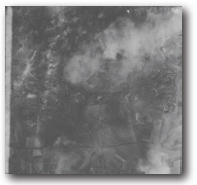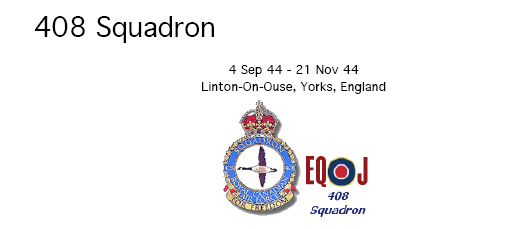
A Canada Goose volant. The Canada goose is at home in Canada, England and
Scotland; its speed and power of flight are indicative of the operational function of the squadron.
| COMMANDING OFFICERS | |
| W/CDR W. Ferris | Jan. 1, 1943-Oct. 27, 1943 |
| A. Mair | Oct. 28, 1943-Nov. 26, 1943 (KIA) |
| D. Jacobs | Nov 27, 1943-May 22, 1944 KIA) |
| R. McLernon | May 24, 1943-Oct. 13, 1944 (Gibb’s) |
| J. Easton | Oct. 14, 1944-Nov. 25, 1944 |
| F. Sharp | Nov. 26, 144-Sept 5, 1945 |
AIRFIELDS FLOWN FROM Leeming
Jan. 1, 1943-Aug. 26, 1943
Linton on Ouse Aug 27, 1943-June 13, 1945 AIRCRAFT TYPE FLOWN ON OPERATIONS
Halifax II, III, VII
Lancaster II
SQUADRON NICKNAME: "Goose"
AIRCRAFT CODE: EQ
Halifax II, III, VII

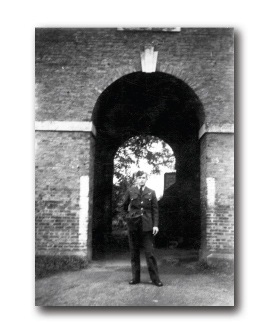
- Burke MacIntosh
In corresponding with Burke Macintosh, he said that he flew every mission with
Gibb except for one. They stayed at a large mansion that had been loaned to the RAF in the beginning of 1937. It was located in a beautiful farm area north of the city of York. There was a narrow river behind the mansion and they use to take a ferry over to a restaurant called Hawthorne House. Burke would play the piano and sing there.
He said that one of the training exercises at Dalton was they would leave the
base with no food or packs. Walking an unbelievable 35 miles, he said their feet
would become a mess with blisters and sores. They would have to stay over night and pretend that they were in enemy territory and that the enemy was looking for them.
They had to sleep in hay stacks and knock on doors begging for food. This was training for when they may be shot down.
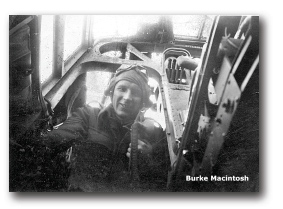
They also learned how to fly
Wellington (Wimples). Doing diversion raids flying with planes that were carrying big loads of bombs. Distracting the enemy away from these planes and finally return home while the main aircraft would drop their load over designated areas.
Gibb’s role was in a turret on the
top of the plane. It would turn so that he
could scan the sky east and west and
above. He had four guns to manage, two
303 shell guns on each side. Burke had the same on the rear of the plane only he could see below.
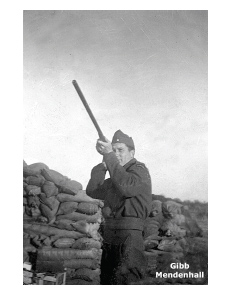
September, 4, 1944
Starting the day at 10:33, Gibb is checked out by F/L Chekaluck for half an
hour, then later that day at 2:40 goes up with Patzer and crew to check out air to air
bombing.
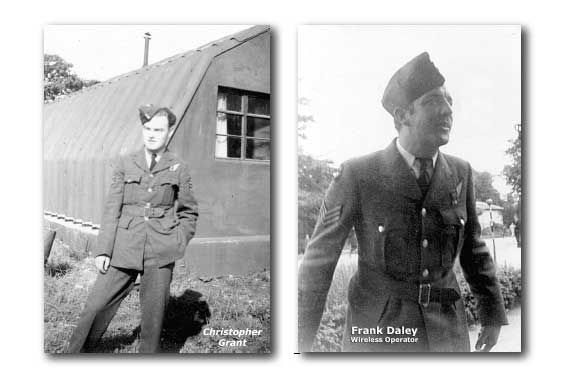
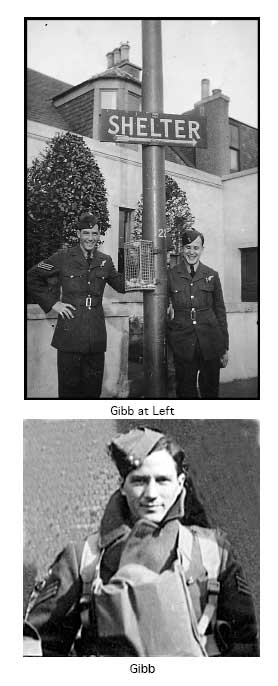
September 5, 8, 9,10, 1944
This week was mostly training, Bombing at Xcty.
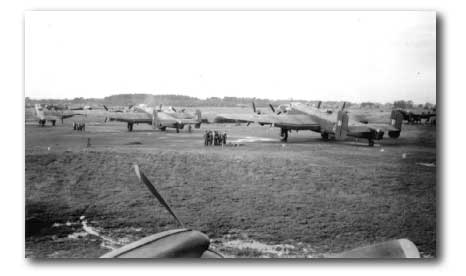
Halifax IIIs from 424 Squadron lined up on perimeter track ready to take off on
an Operation.
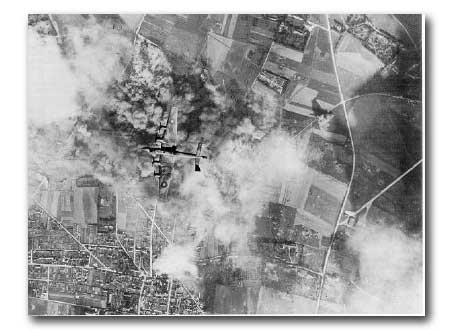
Halifax III from 420 Squadron is caught in a strike photo over over Le Havre on
Sept 10,1944 taken by F/Lt F. Lynch from 428 Squadron
In 1942, British and American bomb crews might not have been able to hit a target smaller than a city, but in 1944, thanks to hard experience and hard science, no
target seemed too small. Railway marshaling yards, highway intersections, dikes, docks, refineries, railway tunnels, submarine factories, and V-1 and V-2 missile launching sites
— all came under allied bombsights, and were destroyed almost at will.
September 12, 1944 (Mission 1)
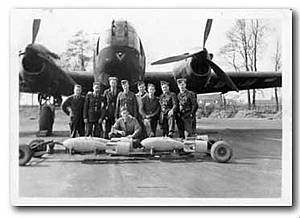
Taking off at 11:42 a.m. flying a Halifax J.
Any member of aircrew could at any time
go to his commanding officer and decline to fly on further operations, but the concept of "operational fatigue" popularly, "flak happy" was not officially
recognized. Those who broke under the strain were rapidly branded "LMF: Lack of Moral Fibre"; de-ranked, de-breveted
(sometimes publicly), and whisked away to menial tasks. Usually, a man asking to be withdrawn from flying duties was instantly removed from the squadron.
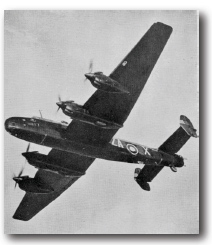
While some of the group were attacking Dortmund, 122 Halifaxes from 408, 415, 420, 425, 426, 431, 432, and 434 Squadrons attacked the synthetic oil plant at Wanne Eickel. The attack was carried out from 16,000 to 19,000 feet with the crew releasing 960,000 lbs of ordinance. No observations were made due to a smoke screen over the target. A great number of aircraft were damaged by flak. F/O J. Mills of 432 Squadron was hit by flak. There were holes put in the port wing and instrument panel. F/O A. Porter was hit by flak. There were holes put in the port wing, stbd wing, and stbd inner nacelle. F/O J. Gault was hit by flak.
Holes put in the port wing tip. Gibb receiving a flak wound over Wanneickel. When he returned to base he got off the plane and was walking down to the de-briefing room where he ran into Howard Hicken from Raymond. He said "Scoss (nick name for Howard Skousen Hicken) look I've been wounded. He showed him a 2 inch hole in his tunic made from a piece of shrapnel. It seemed to please Gibb that he had evidence of his brush with death.
The crew he flew with would never know where they were to bomb next until an
hour or so before takeoff. They would go into a briefing room and a big map
would be pulled down with a pinpoint mark showing the target site. After riefing they could not leave the room until take off because of security. Once they took off they would form a bombers stream, which consisted of many planes traveling together. They could be spread out over 100 miles long and 40 miles wide. After the bombs were dropped the pilot would have to fly absolutely straight for about 30 seconds to allow the bombs to hit the ground and then for the automatic cameras to take a picture. Once back at base they could tell if the target was hit.
4 hours and 45 minutes in the air
September 14, 1944
Two days later 2 hours and 45 minutes of
bombing practice over Xcty.
September 15, 1944 (Mission 2)
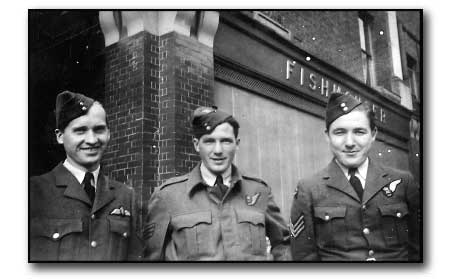
- Mel Depew Gibb Mendenhall Stewart Robinson
Taking off at 10 25 p.m. flying a Halifax J.
172 Halifaxes from 408, 415, 420, 424, 425, 426, 427, 429, 431, 432, 433,
and 434 Squadrons were joined by 28 Lancasters from 419 and 428 Squadrons on an attack at Kiel. The crews were over the target at between 16,500 and 21,500
feet, releasing 442,000 lbs of high explosives and 913,000 lbs of incendiaries. According to reports, the weather was clear and severe damages were caused.
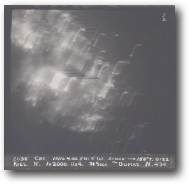
- Strike over Kiel September 15/16, 1944. F/O W. Dumas and crew of 434 Squadron.
F/O J. Mills and crew from 432 Squadron, flying Halifax VII NP-723 coded QO-D, were attacked by an ME-109, there was no claim or damage. P/O J. Gallagher RCAF and crew, flying Halifax VII NP-719 coded QO-N, failed to return from this operation. Sgt C. Gill RAF , F/O J. Leblanc RCAF , P/O H. McLeod RCAF , P/O J. Labelle RCAF , P/O C. Crowe RCAF , P/O D. MacCarthy RCAF were all killed.
5 hours and 30 minutes in the air.
September 17, 1944 ( Mission 3)
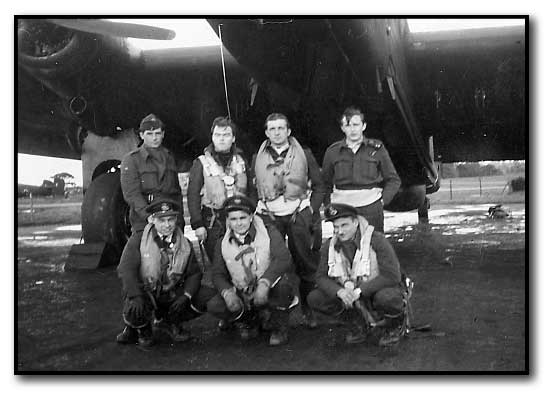
- Mendenhall Grant Daley McIntosh
Taking off at 10:31 a.m. flying a Halifax J.
173 Halifaxes from 408, 415, 420, 424, 425, 426, 427, 429, 431, 432, 433,
and 434 Squadrons were joined by 36 Lancasters from 419 and 428 squadrons on an attack of troop positions at Boulogne. The crews were over the target at between 2,000 and 10,000 feet, releasing 2,280,000 lbs of high explosives. According to reports, bombing was accurate and these troops surrendered soon after. Sgt A. Stedman from 432 Squadron landed at Manston on return.
4 hours in the air.
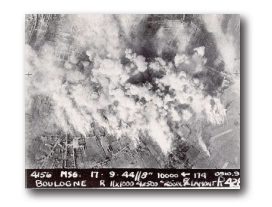
- Strike over Boulogne by the Lamont Crew of 428 Squadron.
September 28, 1944 (Mission 4)
Taking off at 5:03 p.m. Flying a Halifax O.
214 Halifaxes from 408, 415, 420, 424, 425, 426, 427, 429, 431, 432, 433, and 434 Squadrons were joined by 38 Lancasters from 419 and 428 squadrons in an attack on the coastal guns at Cap Gris Nez. The crews were over the target at between 1,000 and 10,000 feet, releasing 1,794,000 lbs of high explosives. Due to worsening
weather over the target, many crews were sent home by the master bomber.
3 hours and 40 minutes in the air.
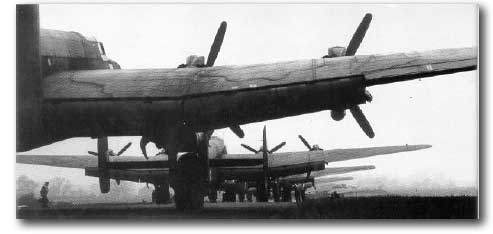
- Halifax IIIs from 431 and 434 Squadrons waiting takeoff on D-Day, June 6 1944.
September 30, 1944 (Mission 5)
Taking off at 10:24 am. Flying a Halifax N.
107 Halifaxes from 408, 415, 420, 425, 426, and 432 Squadrons were ordered
to attack the oil plant at Sterkrade. The crews were over the target at between
16,000
and 18,000 feet, releasing 847,000 lbs of high explosives. The target was cloud
covered so the attack was scattered.
4 hours and 40 minutes in the air.
October 2,3, 1944
Back to training, doing cross country and bombing.

October 6, 1944 (Mission 6)
Taking off at 4:05 a.m. flying Halifax F.
248 Halifaxes from 408, 415, 420, 424, 425, 426, 427, 429, 431, 432, 433,
and 434 squadrons were joined by 45 Lancasters from 419 and 428 squadrons on an attack at Dortmund. This was the greatest effort that the 6 group would send out during the war. The crews were over the target between 17,000 and 20,500 feet releasing 1,510,000 lbs of high explosives and 383,000 lbs of incendiaries.
According to reports, bombing was accurate and the transportation and industrial sections were well hit.
F/O J. Mills from 432 Squadron landed at Downham Market on return due to poor
weather at base. F/O D. Best, F/Lt W. Tobias, F/O G. Stunden, F/Sgt N. Franko,
P/O L. McGuire, F/O A. Craig, P/O H. Britton, F/O J. Gault, F/O M. Krakowsky, F/O R.
Diamond, F/O S. Dean, and S/Ldr G. Larson landed at Sudbury on return due to poor weather at base. F/O A. Bews and F/O A. Potter landed at Methwold on return due to poor weather at base. F/O G. McNicoll landed at Woodbridge on return due to poor weather at base.
P/O J. Hamilton and F/O C. Hemming landed at Bury St. Edmonds on return due to poor weather at base. F/O W. Saye landed at Tuddenham on return due to poor weather at base. W/Cdr J. MacDonald landed at Wratting Common on return due to poor weather at base.
6 hours and 15 minutes in the air. Landing at Chedburch on return trip.
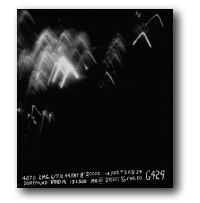
- 429 Squadron Dortmund Raid. October 6/7, 1944 -- F/Lt Childs and Crew.
October 7, 1944
Flying from Chedburch to base.
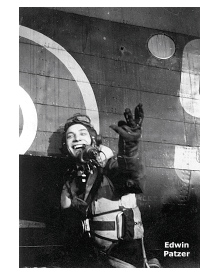
- Pilot

